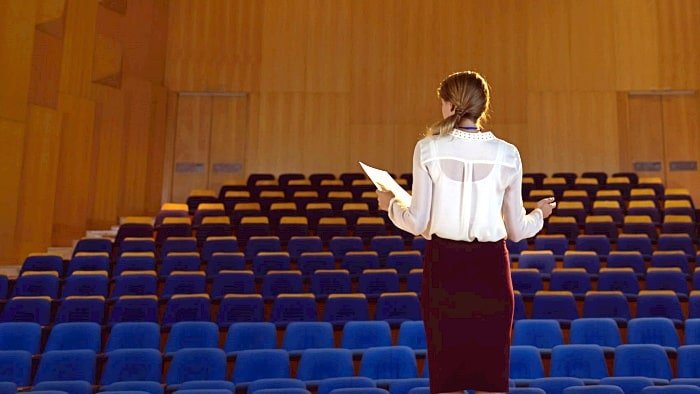SESSION 9

Source: engagingworkshop.com
This session is a collection of tips about how to deliver a professional presentation.
Should you have any doubts about your oral presentation, do not hesitate to contact your teacher. We're here to help you out.
PART 1
Oral presentation rules
TEAMS
3-4 students per team.
TITLE
Scientific topic of your choice, related to your field of study and validated by your teacher.
SCIENTIFIC SUPPORT
Three scientific articles must be referred to during your presentation to support your key points.
TIME LENGTH
12-15 minutes in total (4-5 minutes each member of the team).
FORMAT
Due to current situation, presentations will be recorded on video (mp4 preferred).
SUBMISSION
Send your videos to gonzalo.caminarioboo@univ-nantes.fr via WeTransfer.com.
NOTE: It will take some time to download and check that your videos work, so you may need to wait up to 24 hours for confirmation of video submission.
DEADLINE
20 December 2020.
NOTE
According to the "Dublin descriptors" that define international standards for learning outcomes at university, completion of a Bachelor"s degree means that students should be able to "communicate information, ideas, problems and solutions to both specialist and nonspecialist audiences." Your presentation should therefore be clear even to non-specialists.
PART 2
How to deliver effective presentations
A. ORGANISATION
| CONTENT | |
|---|---|
| Structure | Your presentation has to be structured AND your structure has to be made apparent (announcing outline in intro, using transitions) |
| Thoroughness | Even if you do not have much time, you can and should be thorough: focus on the most important things you have to say and be straightforward |
| Accuracy | Do not assume that your audience is ignorant: be precise and accurate. |
| COMMUNICATION | |
| Body language | When standing in front of an audience, remember your body says as much as your tongue: do not slouch, fidget, or keep your back to the board. Engage in communication with the whole group! |
| Volume and speed | Do not read/ hide behind your notes! Articulate and speak loud enough. Remember you WANT (remember TO want!) your message to be understood! |
| Eye contact | Look at everyone! |
| Visual aid | Communication tools may include ppt slideshows, diagrams, or other props (experimental setup). Either way, they remain TOOLS that need to be fully integrated in your communication plan. Simple approaches can help enhance the quality of your work! |
| LANGUAGE | |
| Grammar | Even though grammar mistakes are more acceptable in an oral than written context, basic errors must be eliminated |
| Pronunciation | It is crucial to check the pronunciation of new vocab as well as key (and therefore recurring) elements in your presentation: not only will mistakes hinder communication, they also discredit your performance |
| Vocabulary | Use simple language (both in terms of syntax and lexis). But make sure you DO have the right lexical references. |
B. PRACTICAL EXAMPLE
Watch this short video with tips and tricks to make your presentation memorable (= more points).
IMPORTANT!!
Due to COVID-19, assessment has changed. Check new regulations
STRUCTURE
Reading
- Oral presentation rules
How to deliver effective presentations
- Organisation
- Practical example
- Video presentations: Michael Kinney's advice
- Marking grid 2020-21
COURSEBOOK
Download a digital copy of your English handout from Madoc or here.